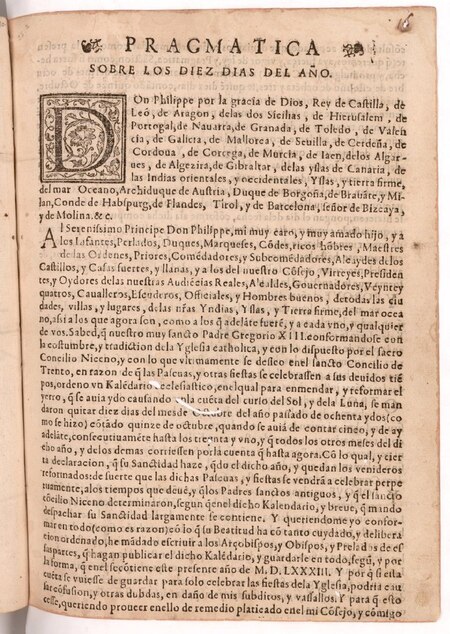Pastoral epistles
|
Read other articles:

Si ce bandeau n'est plus pertinent, retirez-le. Cliquez ici pour en savoir plus. La mise en forme de cet article est à améliorer (novembre 2023). La mise en forme du texte ne suit pas les recommandations de Wikipédia : il faut le « wikifier ». Forces armées belges(fr) La Défense(nl) Defensie(en) Belgian Defence Armoiries de La Défense Branches Composante terreComposante airComposante marineComposante médicale Quartier-général Evere Commandement Commandant en chef Roi Ph…

Questa voce sull'argomento centri abitati della Virginia è solo un abbozzo. Contribuisci a migliorarla secondo le convenzioni di Wikipedia. Segui i suggerimenti del progetto di riferimento. BelmontCDP(EN) Belmont, Virginia LocalizzazioneStato Stati Uniti Stato federato Virginia ConteaLoudoun TerritorioCoordinate39°03′53.83″N 77°29′47.2″W / 39.064952°N 77.496444°W39.064952; -77.496444 (Belmont)Coordinate: 39°03′53.83″N 77°29′47.2″W /…

Kate Atkinson Kate Atkinson (York, 20 dicembre 1951) è una scrittrice britannica, vincitrice di 3 Costa Book Awards (1995, 2013 e 2015[1]), che attualmente vive ad Edimburgo. Indice 1 Biografia 2 Elenco delle opere 2.1 Jackson Brodie 3 Onorificenze 4 Note 5 Altri progetti 6 Collegamenti esterni Biografia Studentessa di Letteratura britannica presso la University of Dundee (Scozia), ha ricevuto la laurea magistrale nel 1974. Dopo essersi sposata, ha avuto il primo figlio, Eve, nel 1975, …

2020年夏季奥林匹克运动会基里巴斯代表團基里巴斯国旗IOC編碼KIRNOC基里巴斯国家奥林匹克委员会網站oceaniasport.com/index_id_66.html(英文)2020年夏季奥林匹克运动会(東京)2021年7月23日至8月8日(受2019冠状病毒病疫情影响推迟,但仍保留原定名称)運動員3參賽項目3个大项旗手开幕式:魯本·卡托亞塔烏(英语:Ruben Katoatau)(举重)和基諾瓦·比里博(英语:Kinaua Biribo)(柔道�…

Chromoendoscopy using Lugol's iodine in the esophagus. The image on the left uses regular white light endoscopy. The image on the right stains with Lugol's iodine, and identifies a squamous cell carcinoma, which does not pick up the stain. Chromoendoscopy is a medical procedure wherein dyes (often the same stains used in histology) are instilled into the gastrointestinal tract at the time of visualization with fibre-optic endoscopy. The purposes of chromoendoscopy is chiefly enhance the characte…

ПосёлокСовхоза «Труд» 50°09′04″ с. ш. 41°14′22″ в. д.HGЯO Страна Россия Субъект Федерации Воронежская область Муниципальный район Петропавловский Сельское поселение Старокриушанское История и география Прежние названия отд. свх. им. Юркина[1] Часовой пояс UTC+3:…

「アプリケーション」はこの項目へ転送されています。英語の意味については「wikt:応用」、「wikt:application」をご覧ください。 この記事には複数の問題があります。改善やノートページでの議論にご協力ください。 出典がまったく示されていないか不十分です。内容に関する文献や情報源が必要です。(2018年4月) 古い情報を更新する必要があります。(2021年3月)出典�…

العلاقات المغربية الصربية المغرب صربيا المغرب صربيا تعديل مصدري - تعديل العلاقات المغربية الصربية هي العلاقات الثنائية التي تجمع بين المغرب وصربيا.[1][2][3][4][5] العلاقة الدبلوماسية بين المغرب وصربيا هي علاقة تعاونية وديبلوماسية جيدة، تشه…

يفتقر محتوى هذه المقالة إلى الاستشهاد بمصادر. فضلاً، ساهم في تطوير هذه المقالة من خلال إضافة مصادر موثوق بها. أي معلومات غير موثقة يمكن التشكيك بها وإزالتها. (مايو 2021) بلباسيمعلومات عامةالإحداثيات 36°35′N 29°58′E / 36.58°N 29.97°E / 36.58; 29.97 تعديل - تعديل مصدري - تعديل ويكي بي…

Військово-музичне управління Збройних сил України Тип військове формуванняЗасновано 1992Країна Україна Емблема управління Військово-музичне управління Збройних сил України — структурний підрозділ Генерального штабу Збройних сил України призначений для плануван�…

Organometallic compounds used in organic synthesis Usually Grignard reagents are written as R-Mg-X, but in fact the magnesium(II) centre is tetrahedral when dissolved in Lewis basic solvents, as shown here for the bis-adduct of methylmagnesium chloride and THF. Grignard reagents or Grignard compounds are chemical compounds with the general formula R−Mg−X, where X is a halogen and R is an organic group, normally an alkyl or aryl. Two typical examples are methylmagnesium chloride Cl−Mg−CH3…

Book by Jerome Corsi Obamanation redirects here. For the word abomination, see Abomination. The Obama Nation: Leftist Politics and the Cult of Personality AuthorJerome CorsiCountryUnited StatesLanguageEnglishSubjectBarack Obama, early life and career of Barack Obama, Barack Obama presidential campaign, 2008PublisherThreshold Editions, an imprint of Simon & SchusterPublication dateAugust 1, 2008Media typePrint (Hardcover)Pages384ISBN1-4165-9806-5OCLC243941633Dewey Decimal328.73092 B 22LC…

Martha MacIsaacLahir11 Oktober 1984 (umur 39)Charlottetown, Prince Edward Island, CanadaPekerjaanActressTahun aktif1998–presentSuami/istriTorre Catalano (m. 2010; c. 2015) Martha MacIsaac (lahir 11 Oktober 1984) adalah seorang aktris berkebangsaan Kanada. Ia telah mengisi berbagai film seperti Superbad (2007), The Last House on the Left (2009), Dead Before Dawn (2012), dan paling terkenal, Battle of the Sexes (2017). Ia juga berkeci…

Processeur PowerPC 970FX Les PowerPC 970 et PowerPC 970FX, aussi connus sous le nom de PowerPC G5, sont des microprocesseurs RISC 64 bits de la famille PowerPC. Conçus par IBM et Apple, ils dérivent des processeurs POWER 4 d’IBM. Ils intègrent l’unité de calcul vectorielle AltiVec déjà utilisée pour les PowerPC G4. Bien que nativement en 64 bits, les PowerPC G5 supportent aussi nativement les instructions 32 bits. Caractéristiques Lancés en 2002, les PowerPC 970 sont …

Benny Wendry Direktur Utama PT Semen PadangMasa jabatan10 November 2014 – 15 September 2017PendahuluMunadi ArifinPenggantiYosviandri Informasi pribadiLahir1 Mei 1969 (umur 55)Padang, Sumatera BaratKebangsaanIndonesiaAlma mater- Institut Teknologi Bandung - Universitas Gadjah MadaPekerjaanProfesionalDikenal karenaDirektur Utama PT Semen PadangSunting kotak info • L • B Ir. Benny Wendry, MM (lahir 1 Mei 1969)[1] adalah seorang profesional Indonesia. Ia diperca…

Torre VelascaLocalizzazioneStato Italia LocalitàMilano Indirizzopiazza Velasca, 5 Coordinate45°27′36″N 9°11′26″E45°27′36″N, 9°11′26″E Informazioni generaliCondizioniIn uso Costruzione1955-1957 Inaugurazione1961 StileNeolibertyPostmodernismo Usocommercialeresidenziale AltezzaTetto: 106 m Piani26 Ascensori8 RealizzazioneArchitettoStudio BBPR(G. L. Banfi, L. BelgiojosoE. Peressutti, E. N. Rogers) IngegnereArturo Danusso AppaltatoreRi.C.E.Ricostruzione Comparti Edilizi…

Extinct order of cartilaginous fishes IschnacanthiformesTemporal range: 418–409 Ma PreꞒ Ꞓ O S D C P T J K Pg N Nerepisacanthus Scientific classification Domain: Eukaryota Kingdom: Animalia Phylum: Chordata Class: †Acanthodii Order: †Ischnacanthiformes Families Ischnacanthidae Poracanthidae Xylacanthus Ischanacanthiformes is a prehistoric order of acanthodian stem-chondrichthyans found in Canada, Ukraine and United Kingdom. Members of this order were nektonic carnivores,[1]…

Calendario gregoriano martes, 25 de junio de 2024 d. C.Calendario juliano martes, 12 de junio de 2024 d. C.Actualizar fechasGregorio XIII El calendario gregoriano es el modelo de calendario actualmente utilizado de manera oficial en casi todo el mundo, denominado así por ser su promotor el papa Gregorio XIII. A partir de 1582, sustituyó gradualmente en distintos países al calendario juliano, utilizado desde que Julio César lo instaurara en el año 46 a. C. El calendario julian…

Georgia Simmerling Contexte général Sport ski alpin, Ski acrobatique et cyclisme sur piste Biographie Nationalité sportive canadienne Nationalité Canada Naissance 11 mars 1989 (35 ans) Lieu de naissance Vancouver Taille 1,72 m Poids de forme 67 kg Club Grouse Mountain Tyee Ski Club Palmarès Médailles obtenues Compétition Or Arg. Bro. Jeux olympiques de cyclisme sur piste 0 0 1 Championnats du monde de cyclisme sur piste 0 1 0 modifier Georgia Simmerling, née le 11 mars 1989 à…

